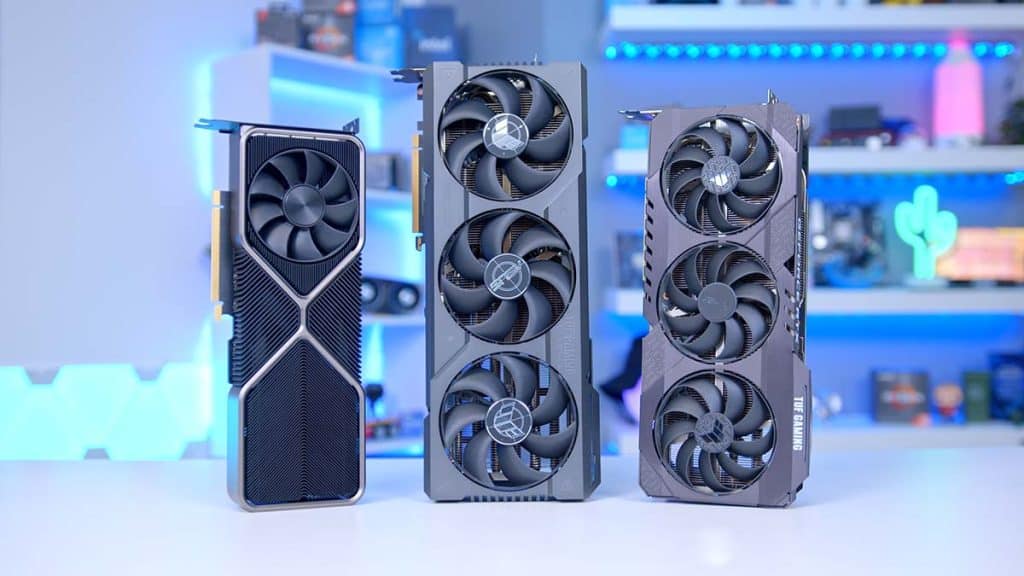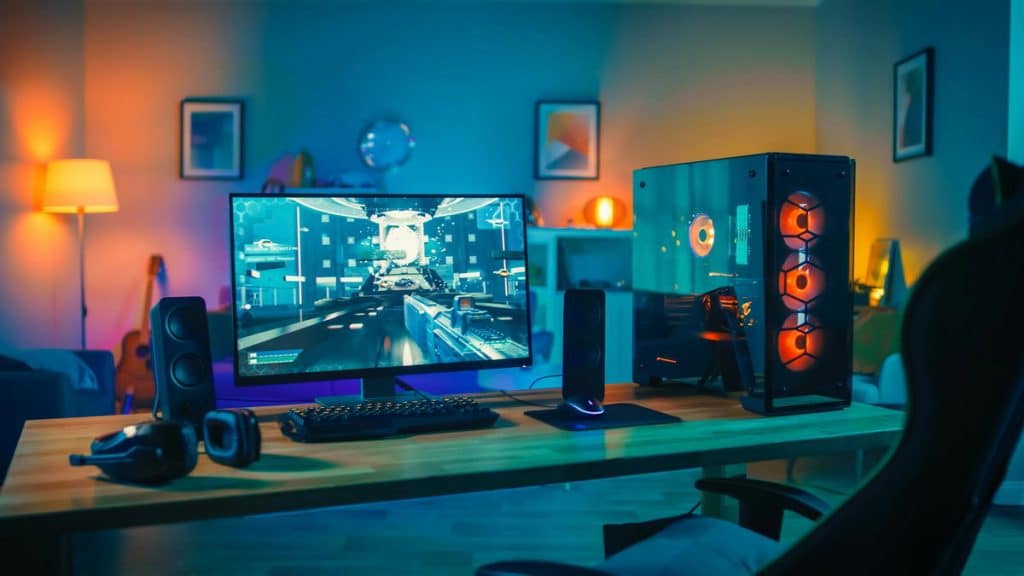When it comes to PC gaming, having a powerful and suitable Graphics Processing Unit (GPU) is crucial. A high-quality GPU can significantly enhance your gaming experience, ensuring smooth gameplay and stunning visuals. However, with the market flooded with numerous options, selecting the right GPU can be overwhelming. In this article, we will provide you with a comprehensive guide on how to choose the right GPU for PC gaming, along with a list of the best GPUs currently available, complete with detailed analysis.
Factors to Consider when Choosing a GPU
Performance
Look for GPUs that offer a balance between price and performance. Consider factors such as the GPU’s clock speed, number of cores, and memory bandwidth to determine its gaming capabilities.
Budget
Set a realistic budget before beginning your search. GPUs can vary significantly in price, so knowing your budget will help you narrow down your options.
Resolution and Refresh Rate
Determine the resolution and refresh rate you intend to play games at. Higher resolutions and refresh rates require more GPU power. Ensure that the GPU you choose can handle your desired settings.
VR and Multi-Monitor Support
If you plan to use virtual reality (VR) or multiple monitors, check if the GPU has the necessary features and connectivity options.
Power Consumption
Consider the power requirements of the GPU, including the recommended power supply wattage. Ensure your power supply unit can handle the GPU’s demands.
Compatibility
Check the compatibility of the GPU with your PC’s motherboard and ensure it fits into your PC case.
Top GPUs for PC Gaming

NVIDIA GeForce RTX 3080
- Architecture: Ampere
- Memory: 10GB GDDR6X
- CUDA Cores: 8704
- Clock Speed: 1.44 GHz (Boost: 1.71 GHz)
- Recommended Resolution: 4K
- VR and Multi-Monitor Support: Yes
- Power Consumption: 320W
- Notable Features: Real-Time Ray Tracing, DLSS, and AI Acceleration
AMD Radeon RX 6800 XT
- Architecture: RDNA 2
- Memory: 16GB GDDR6
- Stream Processors: 4,608
- Clock Speed: 2.25 GHz (Boost: 2.35 GHz)
- Recommended Resolution: 4K
- VR and Multi-Monitor Support: Yes
- Power Consumption: 300W
- Notable Features: Smart Access Memory, Infinity Cache
NVIDIA GeForce RTX 3070
- Architecture: Ampere
- Memory: 8GB GDDR6
- CUDA Cores: 5888
- Clock Speed: 1.5 GHz (Boost: 1.73 GHz)
- Recommended Resolution: 1440p
- VR and Multi-Monitor Support: Yes
- Power Consumption: 220W
- Notable Features: Real-Time Ray Tracing, DLSS, and AI Acceleration
AMD Radeon RX 6700 XT
- Architecture: RDNA 2
- Memory: 12GB GDDR6
- Stream Processors: 2,560
- Clock Speed: 2.32 GHz (Boost: 2.58 GHz)
- Recommended Resolution: 1440p
- VR and Multi-Monitor Support: Yes
- Power Consumption: 230W
- Notable Features: Smart Access Memory, Infinity Cache
NVIDIA GeForce RTX 3060 Ti
- Architecture: Ampere
- Memory: 8GB GDDR6
- CUDA Cores: 4864
- Clock Speed: 1.41 GHz (Boost: 1.67 GHz)
- Recommended Resolution: 1440p
- VR and Multi-Monitor Support: Yes
- Power Consumption: 200W
- Notable Features: Real-Time Ray Tracing, DLSS, and AI Acceleration
Tips to Keep your GPU Stable
Certainly! Here are some tips to help you keep your GPU stable while playing games:
Ensure Proper Cooling
Overheating can lead to instability and performance issues. Make sure your PC has adequate cooling, including proper airflow in the case, clean dust filters, and functioning fans. Consider additional cooling options such as aftermarket GPU coolers or case fans if necessary.
Monitor Temperatures
Use monitoring software to keep an eye on your GPU temperatures while gaming. High temperatures can indicate cooling issues. If temperatures consistently reach unsafe levels (usually above 90°C/194°F), consider improving your cooling setup or adjusting in-game graphics settings to reduce the workload on the GPU.
Update GPU Drivers
Keep your GPU drivers up to date. New driver updates often include performance improvements, bug fixes, and optimizations for specific games. Visit the manufacturer’s website (Nvidia or AMD) to download and install the latest drivers for your GPU model.
Optimize In-Game Settings
Adjusting in-game graphics settings can help balance performance and stability. If you notice instability or low frame rates, try lowering graphics settings such as anti-aliasing, shadows, or ambient occlusion. Experiment with different settings until you find a good balance between visual quality and smooth gameplay.
Avoid Overclocking
Overclocking your GPU can increase performance, but it also puts additional strain on the GPU and can lead to instability if not done properly. If you experience crashes or artifacts while gaming, consider reverting your GPU to its default clock speeds.
Maintain a Clean System
Dust accumulation can hinder proper cooling and lead to increased temperatures. Regularly clean your PC, including the GPU heatsink and fans, to prevent dust buildup. Use compressed air or an antistatic brush to gently remove dust without causing damage.
Power Supply Considerations
Ensure that your power supply unit (PSU) can handle the power demands of your GPU. Insufficient power supply can cause instability. Refer to the GPU manufacturer’s recommendations for the recommended PSU wattage and make sure your PSU meets or exceeds that requirement.
Avoid Overloading Background Processes
Close unnecessary background processes and applications while gaming. Resource-intensive programs running simultaneously can put an additional strain on your GPU, potentially causing stability issues. Consider using tools to manage startup applications and background processes to optimize system performance.
Keep Your System Updated
Regularly update your operating system and other software components to benefit from bug fixes, security patches, and performance optimizations. Keeping your system up to date can help ensure compatibility and stability with the latest games and drivers.
By following these tips, you can help maintain the stability of your GPU while enjoying smooth and uninterrupted gaming sessions.
Comparing Nvidia Geforce and AMD Radeon
Certainly! Here’s a table comparing Nvidia GeForce and AMD Radeon GPUs:
| Nvidia GeForce | AMD Radeon | |
|---|---|---|
| Architecture | Ampere, Turing, Pascal, Maxwell, Kepler | RDNA 2, RDNA, GCN, TeraScale |
| Real-Time Ray | Available on RTX series (RTX 30, RTX 20) | Available on select RX series |
| Tracing | (RX 6000, RX 5000 with RDNA 2) | |
| DLSS | Available on RTX series (RTX 30, RTX 20) | N/A |
| Memory | GDDR6X, GDDR6, GDDR5X, GDDR5 | GDDR6, GDDR5, HBM2 |
| CrossFire/SLI | No longer supported on newer GPUs | No longer supported on newer GPUs |
| Smart Access | No | Available on RX 6000 series with Zen 3 |
| Memory (SAM) | CPUs for improved performance | |
| Infinity Cache | No | Available on RX 6000 series for |
| improved bandwidth and latency | ||
| CUDA Cores/Stream | Varies per model | Varies per model |
| Process Technology | 8nm (Ampere), 12nm (Turing), | 7nm (RDNA 2), 7nm (RDNA), 14nm (GCN), |
| 16nm (Pascal), 28nm (Kepler), etc. | 40nm (TeraScale) | |
| Power Consumption | Varies per model | Varies per model |
| Notable Features | DLSS, AI Acceleration, NVENC, | Infinity Cache, Smart Access Memory, |
| G-SYNC, Reflex, ShadowPlay, etc. | FidelityFX, Radeon Anti-Lag, | |
| Radeon Boost, Radeon Chill, etc. |
Please note that this table provides a general overview, and specific features and capabilities may vary depending on the GPU model within each series. It’s always recommended to refer to the specifications of individual GPUs for detailed information.
Conclusion
Choosing the right GPU for PC gaming involves considering factors such as performance, budget, resolution, and compatibility. The list provided here features some of the best GPUs available, each with its own unique strengths and capabilities. Whether you opt for NVIDIA’s powerful RTX series or AMD’s feature-rich Radeon cards, be sure to assess your specific requirements and match them with the GPU that best suits your needs.
With the right GPU, you can elevate your gaming experience and immerse yourself in the world of high-quality visuals and smooth gameplay.

